The UBCM convention is a lot of things, besides a regular go-to-rooms-and hear-panel-talks convention. There are all the trappings of an AGM (financial report, election of officers, etc.) including a reporting out of what progress the UBCM has made over the previous year. It is also an opportunity local governments to speak to the provincial government about important issues.
The main way that the UBCM, as the collected body of all locally elected officials in BC, lobby the Provincial Government is through drafting and passing Resolutions. This year there were something like 180 resolutions proposed, ranging from opposition to the Kinder Morgan Pipeline to requests for changes in the local government regulations regarding ill or injured elected officials who must miss meetings, to how we will seek to tax or regulate short term rentals. Each was discussed, debated, potentially amended, then voted upon by the assembled delegates.
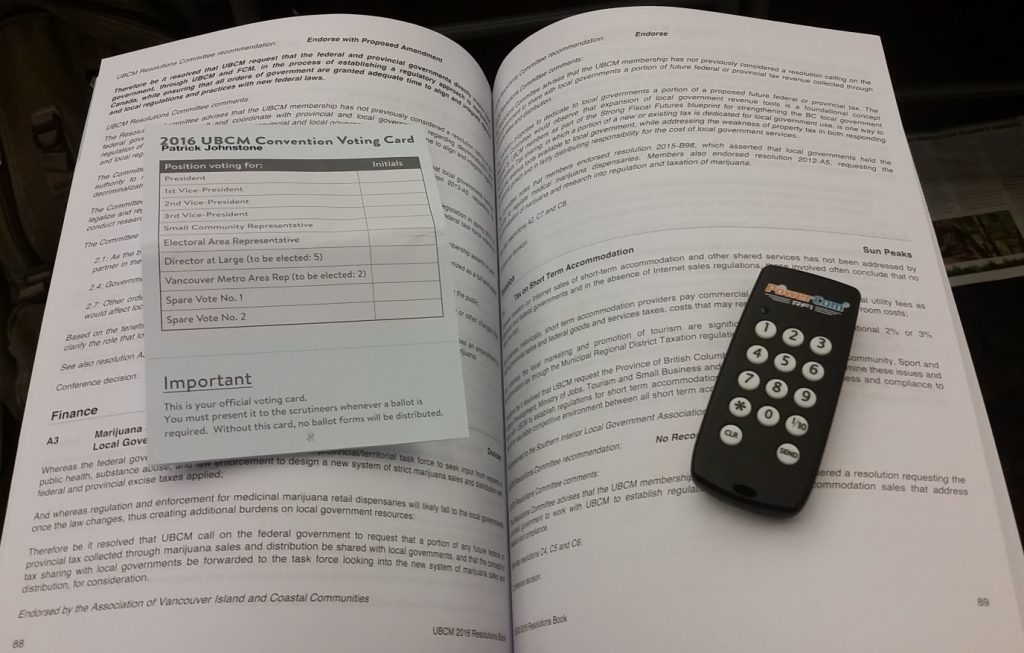
New Westminster put forward four resolutions for consideration (and were, through representation on the Lower Mainland Local Government Association, involved in the development of others). This is a quick review of how the New West-led resolutions went down:
B137 asked that the province amend the Residential Tenancy Act to allow renters the right of first refusal to return to their units after renovations, to provide more protection for renters from being displaced by “renovictions”.
Unfortunately, this resolution was late in the program, and we ran into time constraints on the agenda. Resolutions not passed by noon on Friday are passed as a block referral back to the UBCM executive for consideration. This doesn’t mean they die, but it doesn’t bode well for them.
Councillor Williams made a valiant attempt to resurrect it through a procedural removal from the block referral, but we failed to get the 60% vote required to make that happen, and the resolution was referred.
Both B142 (asking for a provincial sales tax exemption for Emergency Preparedness kits, an initiative of Councillor Puchmayr and the Emergency Advisory Committee) and B144 (asking that the Ministry of Transportation and the Federal Minister of Transportation work to create standards for reflectivity of clothing for non-professional road users) were also referred back to Executive due to time constraints.
This is a bit of a disappointment, because both B137 and B144 were items that were brought to our Council by citizens of New West, and it would have been great to have been able to motivate members to support it, share the issue with our local government colleagues, and give our citizens a voice within the Province. This is only one avenue to do this, and we will have to look at other methods, or even bring this back next year, where we can hopefully get earlier in the agenda.
Finally, resolution C13 asked that the burden of proof for claims of PTSD for first responders be reduced, due to the nature of the work, which would allow speedier and more efficient treatment of such claims under WorkSafe BC. There was a similar resolution (B43) forwarded by Coquitlam, which was endorsed during the convention, so this Resolution was effectively withdrawn, being redundant.
So New Westminster didn’t change the world with our resolutions. However, we were there speaking on and supporting (or defeating) resolutions, right to the bitter end at 5 after 12 on Friday. There were a great many good ideas passed, and many initiatives supported, so the collective voice of the local governments of British Columbia are telling the provincial government what direction they want to see the province go. I guess we will find out if we were heard going into the election in May.
The UBCM Convention is also an opportunity for local governments to sit down in face-to-face meetings with Government Ministers, Members of the Opposition, and senior Ministry staff. Members of New West Council had discussions about important transportation infrastructure issues in our City, about increasing opportunities for affordable housing, about TransLink, and about development of our IDEA centre and the associated District Energy System for Sapperton.
These meetings are not where big agreements are signed, or issues are hammered out, they are a place for us to tell them what we are up to, to discuss opportunities for them to help (be that with investment or helpful legislative measures), and for us to identify potential synergies with provincial goals and strategies.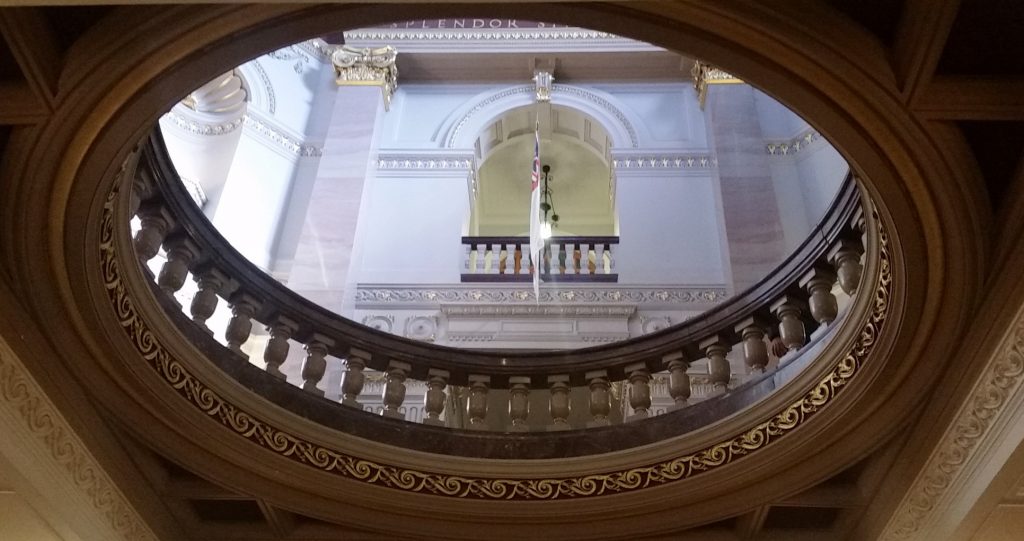
It was interesting for a rookie like me to observe, learn, and even contribute a bit to the conversation with my more experienced council colleagues. I’m hoping us opening ourselves up for collaboration pays off with some great projects and improvements for New West.
This is my first time at UBCM, and I am learning how to navigate it all. I was at a networking lunch event when I talked to a Councillor from another larger city that had been to many of them; perhaps too many. When he asked if I was enjoying my first time, I said yes, for the most part. He then said something that confused me.
“This is your reward for all the volunteering.”
I assume he was speaking of the networking lunches, and the evening receptions held by everyone from CUPE to CAPP to Port of Vancouver, where food and drink are well distributed. I dropped by several events, and did indeed network and make connections with people across the province, but shouting at people in crowded convention rooms gets dull pretty quick (yes, I am getting old). If this is the reward, it’s not a terribly enticing one.
But the other point is that I’m not volunteering. This is a job. I get paid to do it. You can argue we get paid too much or too little, but we are not volunteers. Taxpayers have paid for me to attend UBCM, and I have a job to do here. People who know me will know I have done a lot of volunteering for organizations of various sizes, for various reasons, and I have a tremendous respect for the work volunteers do in our community – in New West especially, we rely on a dedicated and serious volunteer population, and would be poorer without them. That said, I don’t take the volunteer mindset into Council work, I take a work mindset into it, and try to treat the work with the level of professionalism it deserves. I also think the job has rewards much greater than rubber chicken and a glass of free wine.
This was relevant during the resolution sessions when we were discussing things like extending parental leave protections to elected officials, and creating and enforcing harassment protocols for UBCM events and conventions, so that no-one has to be made feel uncomfortable or threatened in their workplace (both resolutions supported). Council is a workplace, not a club, and should be treated as one.
Maybe I’m being over sensitive to an off-the-cuff remark, but I have been immersed in politics for several days, and between the resolutions and meetings with Ministers and MLAs, I have been forced to parse information from nuance of language. Because people often mean things in how they say things, whether they recognize it or not.
It also reflected the two worlds of UBCM, and of local politics in general: those who are there to get things done and make things happen, and those there because the seat holds something like prestige, or power.
Fortunately, I met and was able to learn from some great people at this event who were all about that first category. Kiersten Duncan from Maple Ridge, Matthew Bond from North Vancouver, Michelle Kirby from Oak Bay, and others. The future looks bright if there are people like this holding the flame.
Perhaps special mention should go to our Host Mayor, Lisa Helps. While in Victoria, I stumbled upon a local lifestyle magazine called Douglas, in which there was an interview with Mayor Helps. As a mainlander only vaguely aware of Island politics, I only knew she was progressive, somewhat polarizing, and tackling some tough issues (that are not especially unique to her City). When I read this interview, I was refreshed by her open manner and straight-forward attitude about her role as a Mayor and the problems they are addressing. Every piece of it says she is a woman interested in the hard work of civic governance, not about being populist or ideologue (there are plenty of those types already, even on her own Council), and not wasting her energy trying to appeal to the blowhards with more cynicism than ideas. She doesn’t have time to pander, she is too busy running a City. It was a refreshing read. Here, I’ll link again so you can check it out.
I continue to find inspiration at UBCM.
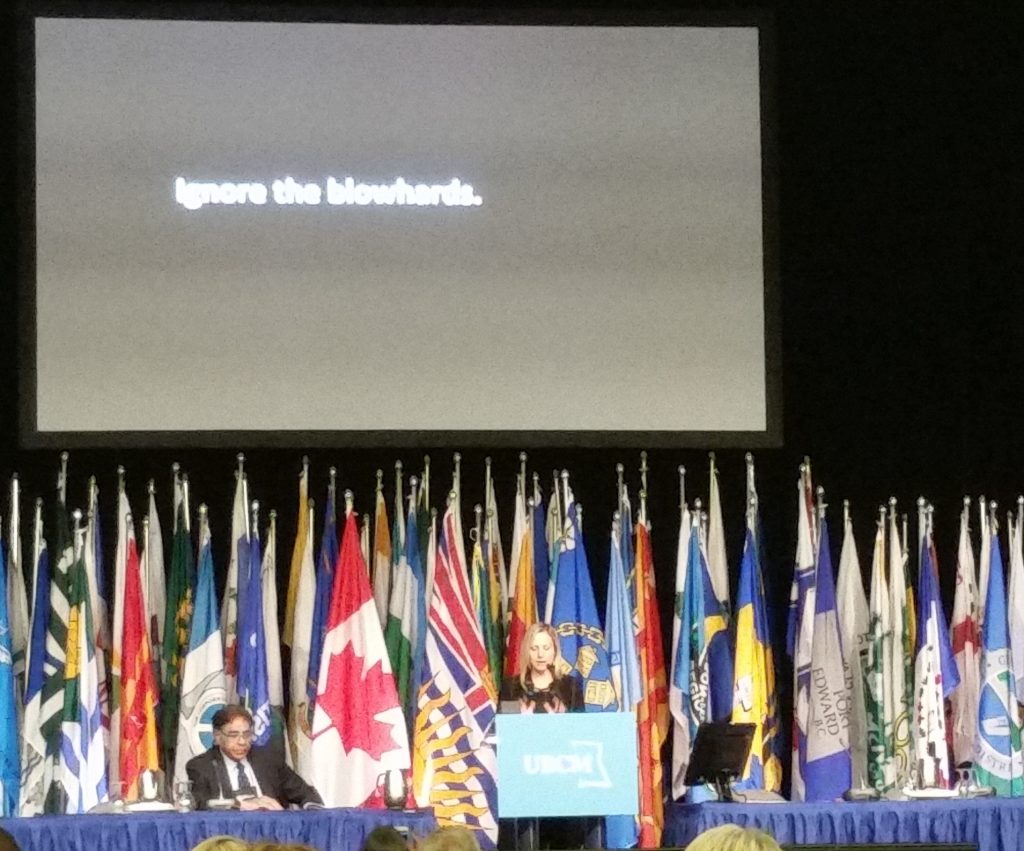
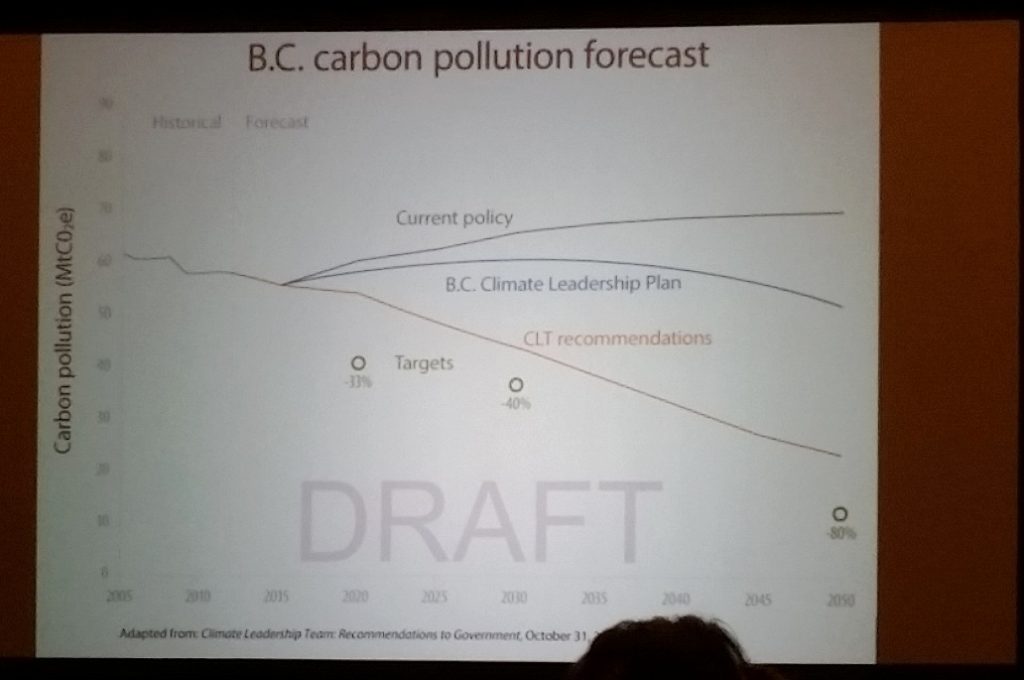
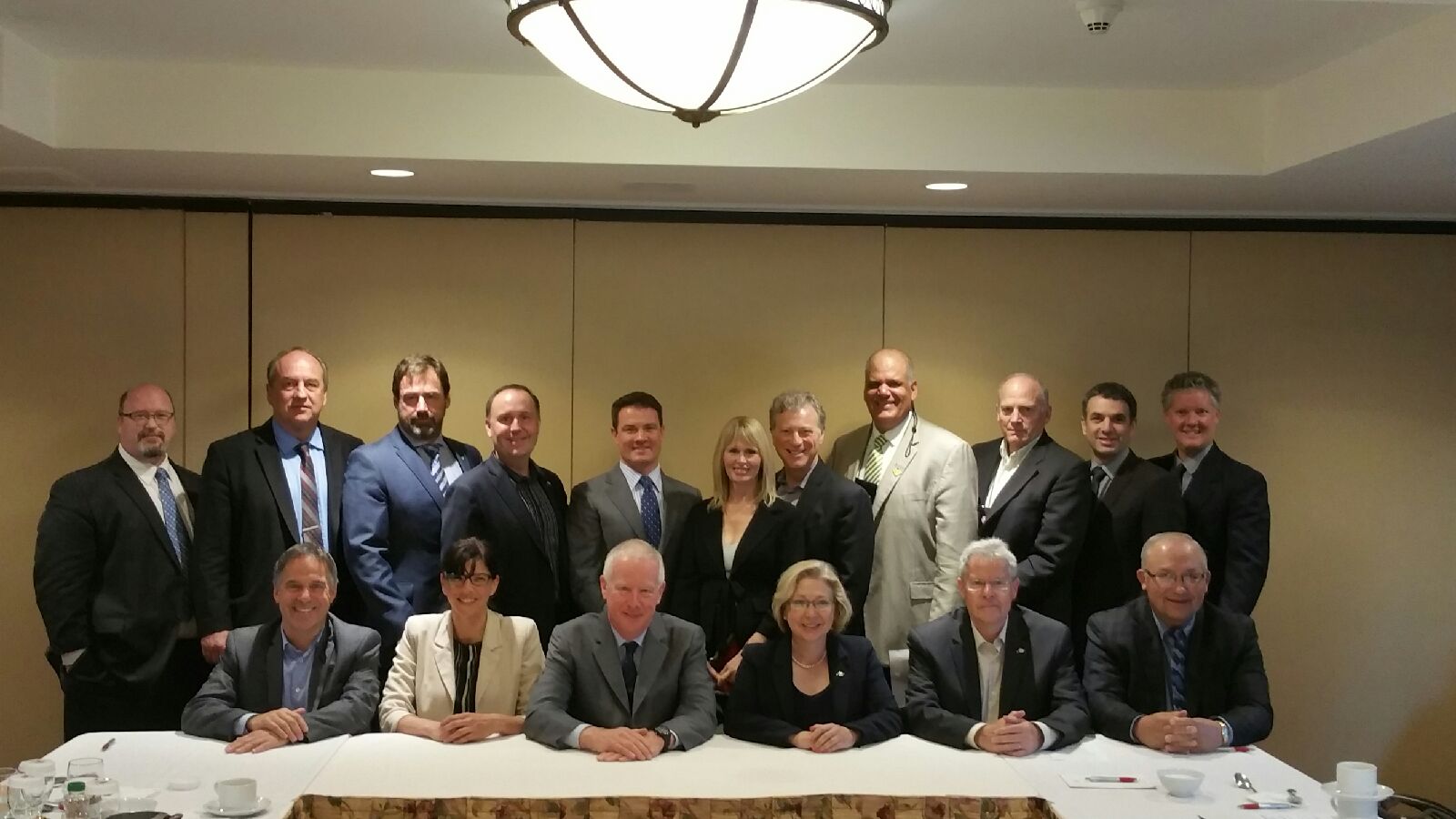
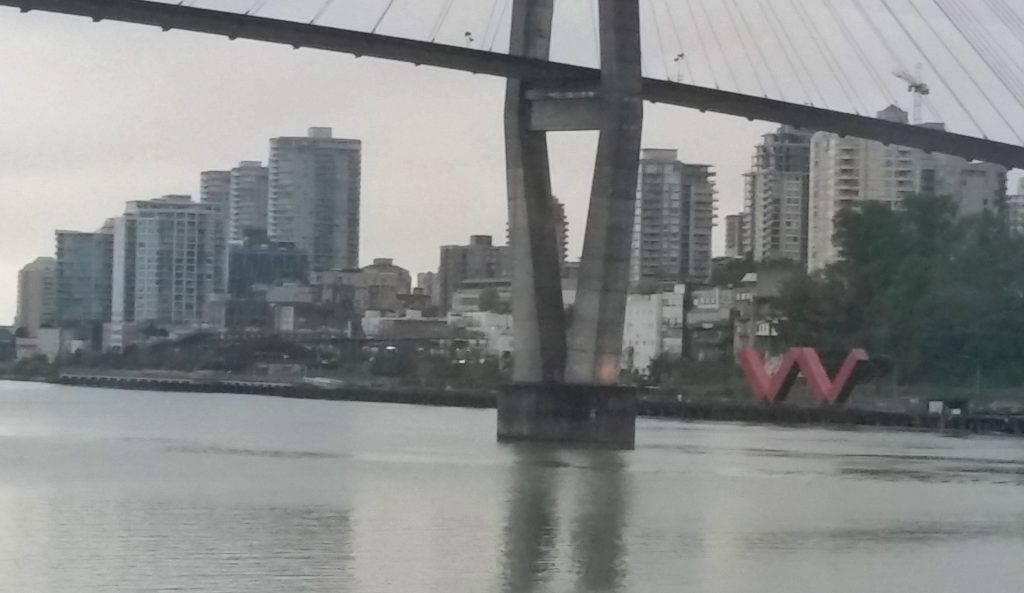
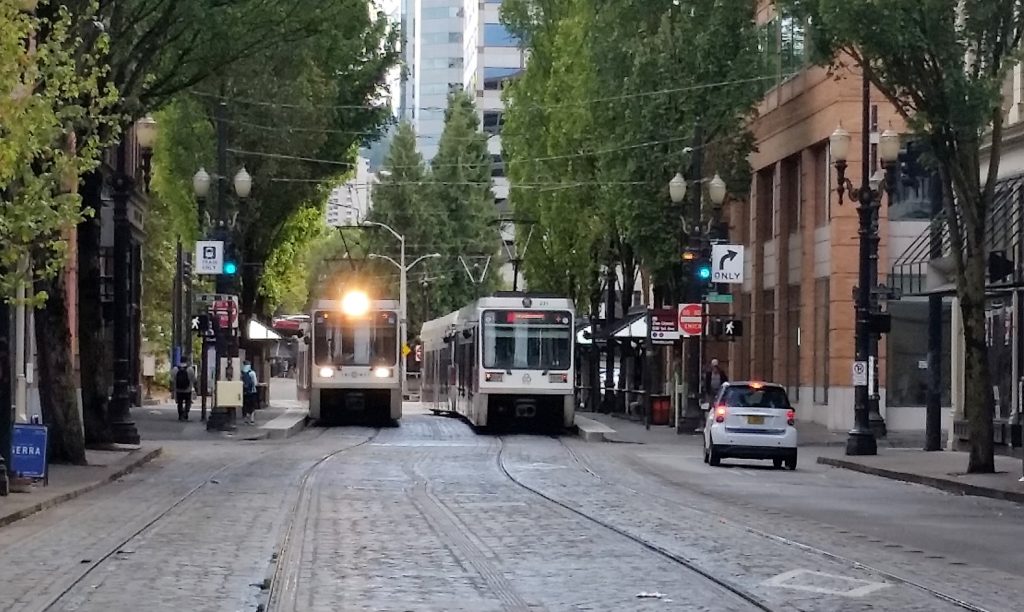
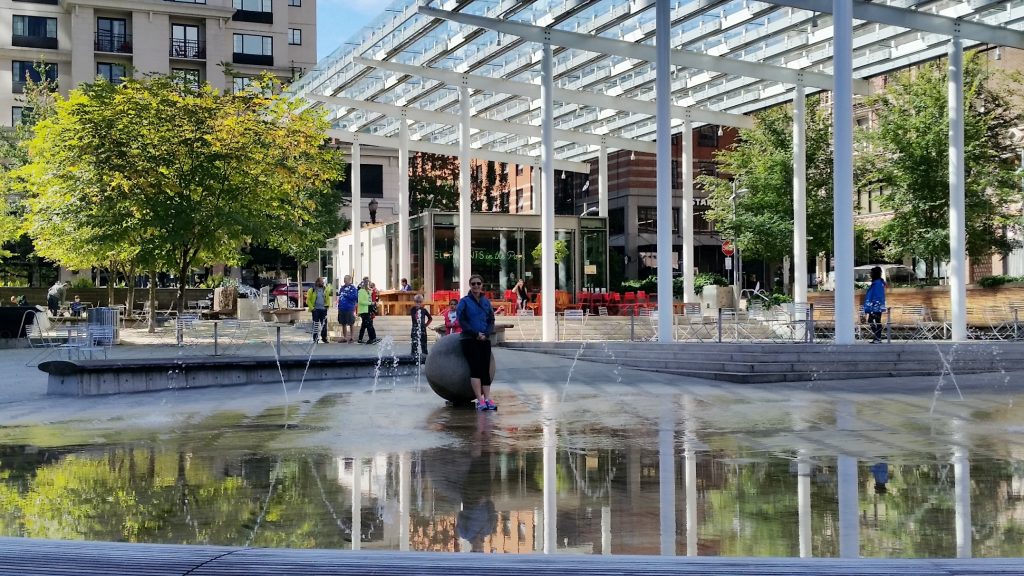 Clearly, Portland has put a lot of thought into ways to keep their streets and public spaces friendly, or “sticky” in the Jacobsian sense. Public drinking fountains, well designed (and utilized!) stand-alone public bathrooms, squares with large fountains clearly designed to be played in on hot days as opposed to viewed from a respectful distance, and many newer spaces designed to blur the line between public and private spaces. There is a lot of reason to be on the street, and spend a bit of time watching the world go by – or “loitering”, as some may call it.
Clearly, Portland has put a lot of thought into ways to keep their streets and public spaces friendly, or “sticky” in the Jacobsian sense. Public drinking fountains, well designed (and utilized!) stand-alone public bathrooms, squares with large fountains clearly designed to be played in on hot days as opposed to viewed from a respectful distance, and many newer spaces designed to blur the line between public and private spaces. There is a lot of reason to be on the street, and spend a bit of time watching the world go by – or “loitering”, as some may call it.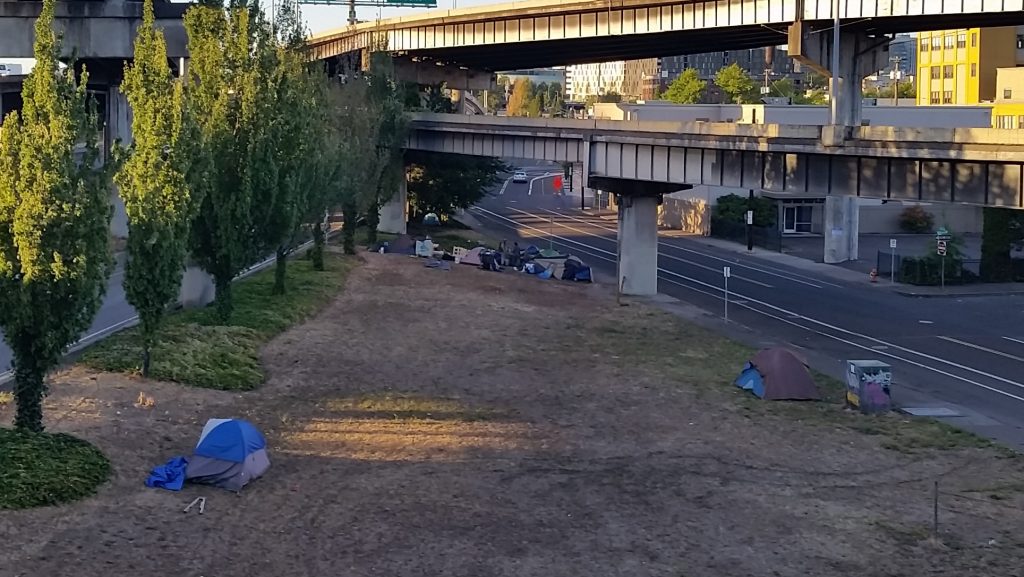 I’m, not sure why, but I was somewhat surprised by the serious number of homeless people in Portland. It seemed there were tents everywhere, and at least one well-established Tent City in the Little Tokyo area. Drug abuse and mental illness issues were apparent, and the gentrification of areas north of Downtown is happening in the midst of a lot of poverty. We never felt unsafe, but it is clear Vancouver isn’t alone in finding difficulty “trickling down” the prosperity.
I’m, not sure why, but I was somewhat surprised by the serious number of homeless people in Portland. It seemed there were tents everywhere, and at least one well-established Tent City in the Little Tokyo area. Drug abuse and mental illness issues were apparent, and the gentrification of areas north of Downtown is happening in the midst of a lot of poverty. We never felt unsafe, but it is clear Vancouver isn’t alone in finding difficulty “trickling down” the prosperity.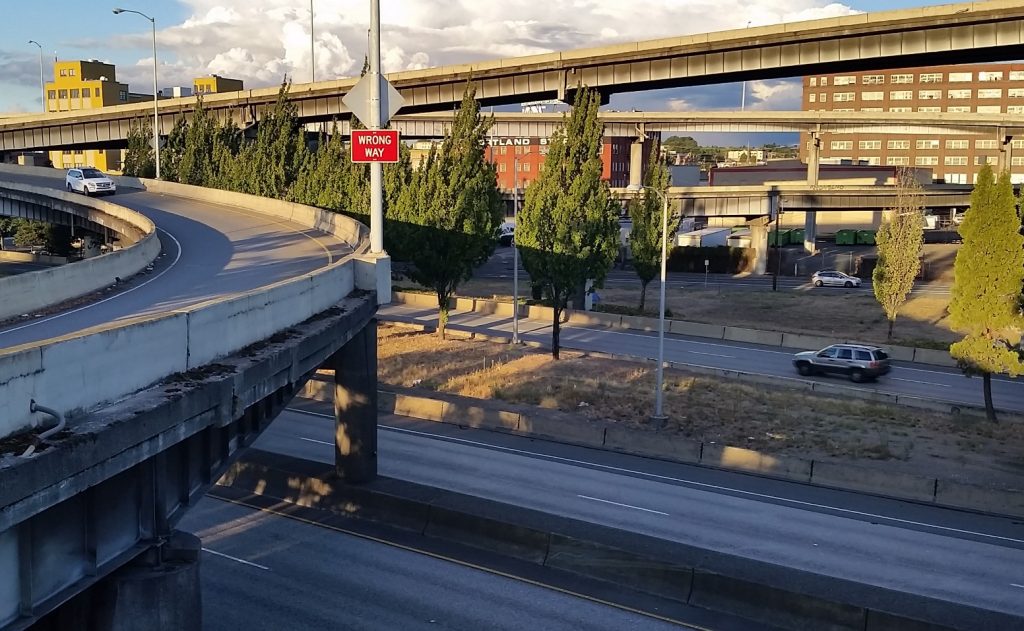 Wow, get away from the cool parts, and it is a short trip to freeway Hell. The contrast between the west shore of the river (where the Harbour Drive freeway was removed and turned into a park in the late 1970s) and the east shore (where I-5 Freeway stacks and flyways fill the skyline) is pretty much a case for choosing the kind of City you want. From all around the City, there are peek-a-boo views of stacked freeways. It would be interesting to study how the 4-lane I-405, which somewhat constrains the western expansion of Downtown, may actually add to the density and resultant vibrancy of downtown.
Wow, get away from the cool parts, and it is a short trip to freeway Hell. The contrast between the west shore of the river (where the Harbour Drive freeway was removed and turned into a park in the late 1970s) and the east shore (where I-5 Freeway stacks and flyways fill the skyline) is pretty much a case for choosing the kind of City you want. From all around the City, there are peek-a-boo views of stacked freeways. It would be interesting to study how the 4-lane I-405, which somewhat constrains the western expansion of Downtown, may actually add to the density and resultant vibrancy of downtown.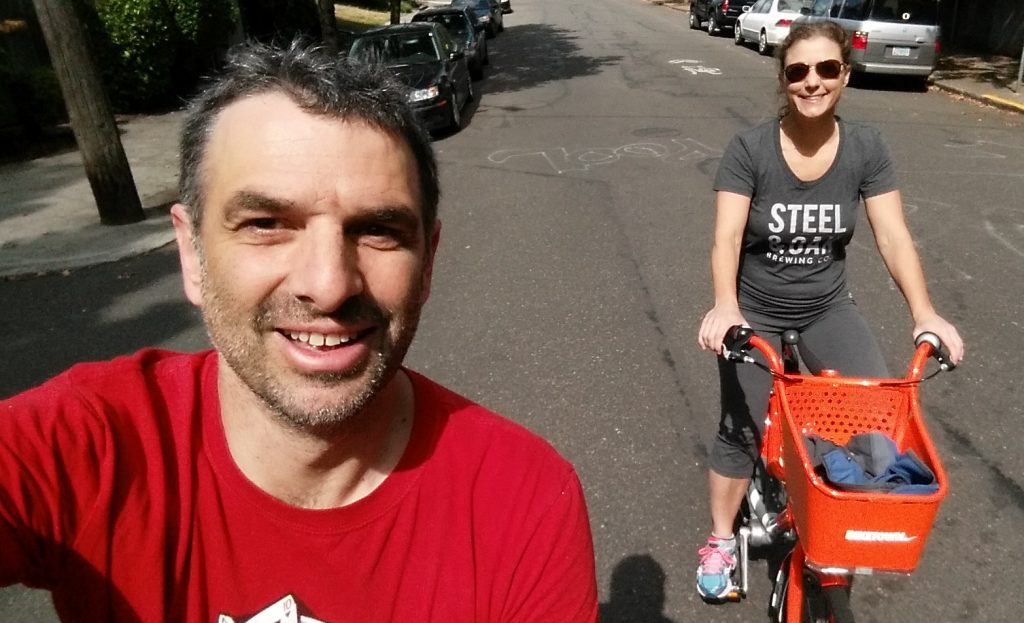 We rode bikes! Portland has a
We rode bikes! Portland has a 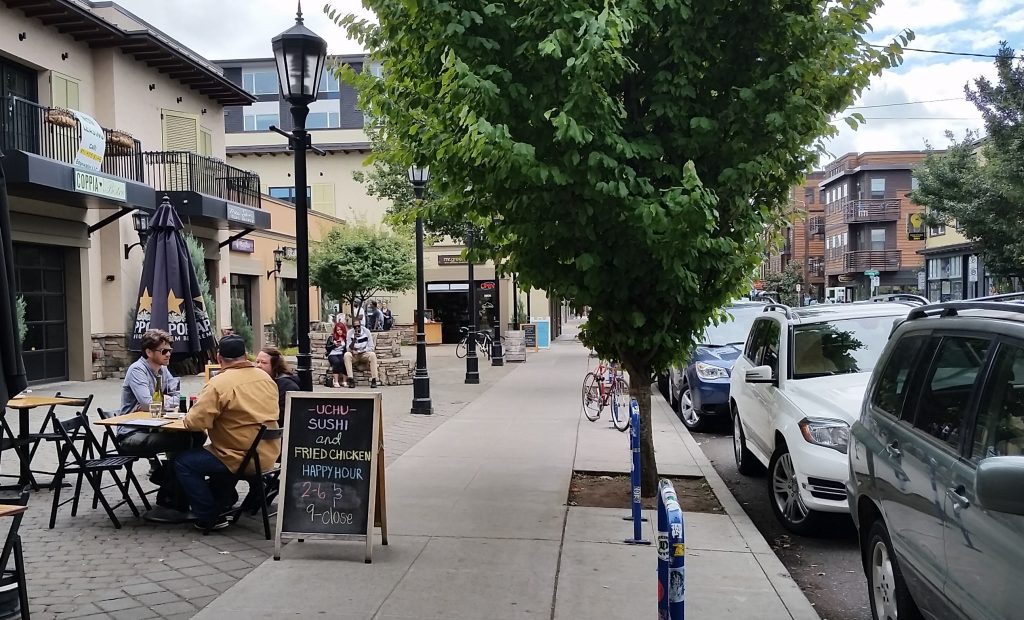 Once we had bikes, we crossed the River to Mississippi and Hawthorne, two commercial/residential neighbourhoods that were not suburb, but more the fringe of the urban area, rather like W41st in Kerrisdale or East Columbia in Sapperton. Both had their charms, but Mississippi won me over with a more human scale road. Mississippi Ave is 12m wide, two-lanes with parking; Hawthorne Blvd for much of its length is one of those 16m-wide 4-lane + central turn lane no parking behemoth stroads that suck the energy off of the street. Both were cool areas, worth the time to stroll, one just felt more like a place I wanted to spend time.
Once we had bikes, we crossed the River to Mississippi and Hawthorne, two commercial/residential neighbourhoods that were not suburb, but more the fringe of the urban area, rather like W41st in Kerrisdale or East Columbia in Sapperton. Both had their charms, but Mississippi won me over with a more human scale road. Mississippi Ave is 12m wide, two-lanes with parking; Hawthorne Blvd for much of its length is one of those 16m-wide 4-lane + central turn lane no parking behemoth stroads that suck the energy off of the street. Both were cool areas, worth the time to stroll, one just felt more like a place I wanted to spend time.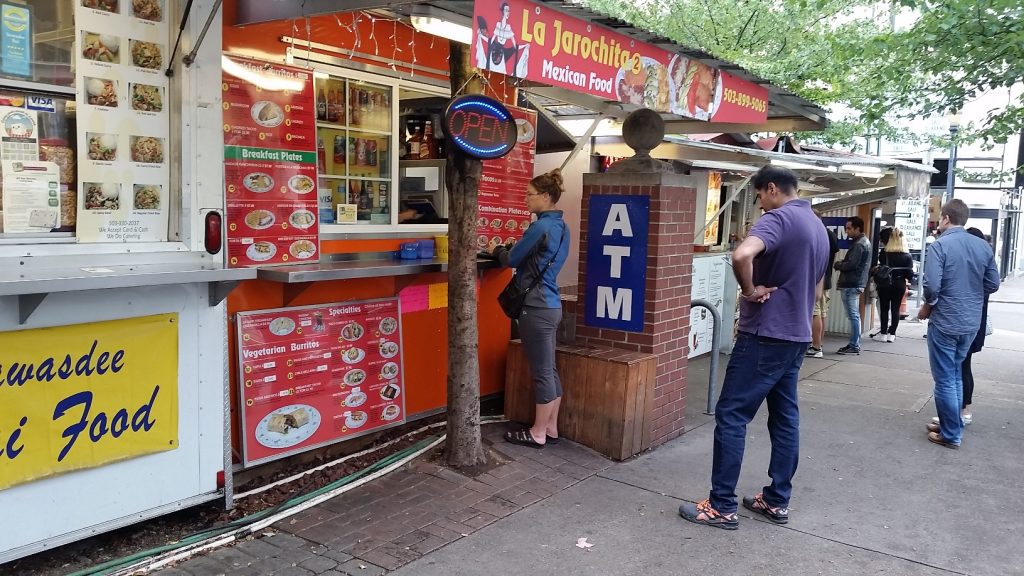 There are a lot of food trucks in Portland, entire City blocks dedicated to their semi-permanent establishment. We appreciated them during our walks about, but I was a little surprised how their ubiquity didn’t actually foster much originality. Burritos, Shawarma/Gyros, and Pad Thai were ubiquitous, but there wasn’t a lot of kale tofu macaroni options. Why does mainstreaming something always take the fun out of it?
There are a lot of food trucks in Portland, entire City blocks dedicated to their semi-permanent establishment. We appreciated them during our walks about, but I was a little surprised how their ubiquity didn’t actually foster much originality. Burritos, Shawarma/Gyros, and Pad Thai were ubiquitous, but there wasn’t a lot of kale tofu macaroni options. Why does mainstreaming something always take the fun out of it? The
The 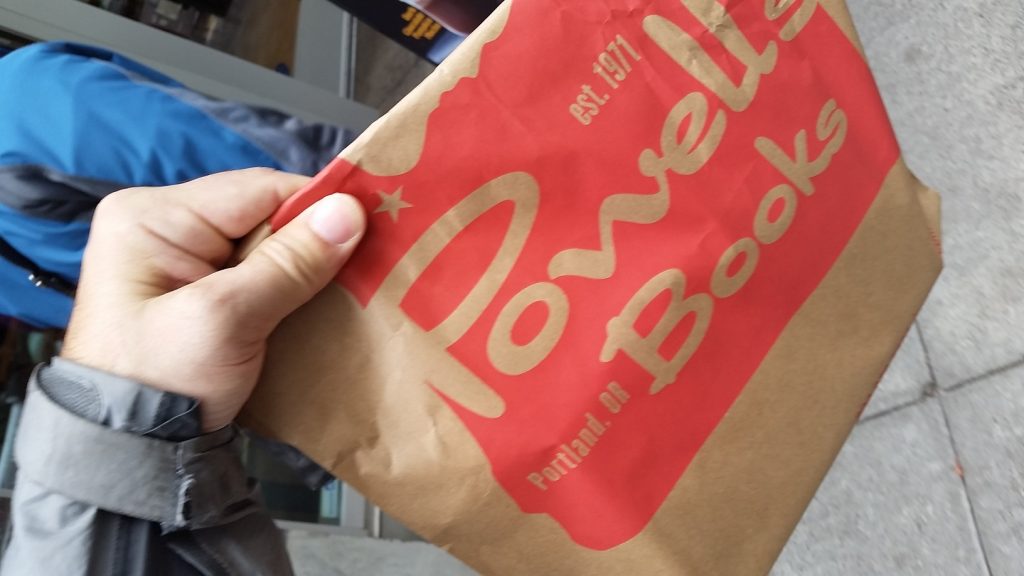 Yes, peer pressure, after three days, finally dragged me into Powell Books. Skepticism verging on cynicism (I don’t have time to read any more books!) was abated by my seeing a book of
Yes, peer pressure, after three days, finally dragged me into Powell Books. Skepticism verging on cynicism (I don’t have time to read any more books!) was abated by my seeing a book of  There was also some beer pressure. We stopped at several small to medium sized breweries and character tap houses. We tasted beer from the premises, and beer from far-off places like Bend, and Bellingham. We tasted barrel-aged beers, sours, barley wines, and Westcoast IPAs that were like concentrated hop syrup. We were often surprised, seldom disappointed. It was also nice to be immersed in an atmosphere where drinking beer was about flavours and aromas, creativity and locality. The tap house scene was brick walls and art, not TV screens and sports. We sat at the bar, told people our stories, an they told us theirs. The food was locally sourced charcuterie, not hot wings and dry ribs. The whole vibe was hipster to the max, but cool and comfortable.
There was also some beer pressure. We stopped at several small to medium sized breweries and character tap houses. We tasted beer from the premises, and beer from far-off places like Bend, and Bellingham. We tasted barrel-aged beers, sours, barley wines, and Westcoast IPAs that were like concentrated hop syrup. We were often surprised, seldom disappointed. It was also nice to be immersed in an atmosphere where drinking beer was about flavours and aromas, creativity and locality. The tap house scene was brick walls and art, not TV screens and sports. We sat at the bar, told people our stories, an they told us theirs. The food was locally sourced charcuterie, not hot wings and dry ribs. The whole vibe was hipster to the max, but cool and comfortable.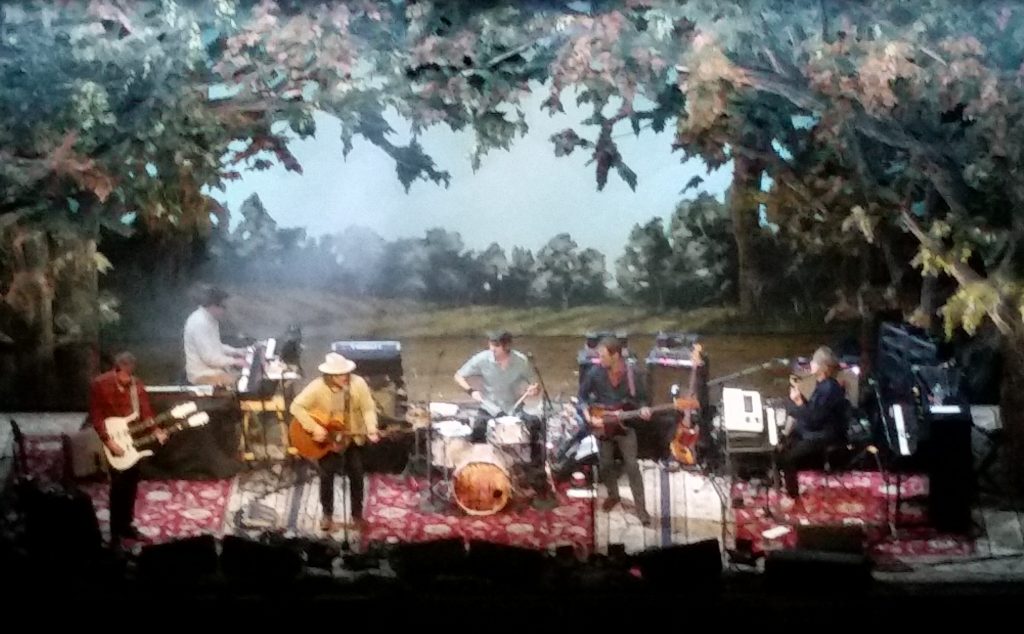 Finally, we saw a Wilco show. Which was remarkable. I have seen them many times in the past, but every time brings new and different pleasures. This was a softer, more laid back version of Wilco than some of the recent tours, which suited @MsNWimby fine, but they still blew the roof off with Spiders (Kidsmoke). Best quote of the night (I can only paraphrase) was Jeff Tweety describing Nels’ thrashing his beat-up Jazzmaster at the end of the otherwise-mellow Impossible Germany: “If you have a band, and you have a song, and you have a guitarist who can do that with it, you put it on the setlist every f’ing night!” I have to agree. Every time I see him play it, I swear it is it the greatest guitar performance I have ever seen. Every damn time. (the spine-shiver hits me at about 5:30 in the video below)
Finally, we saw a Wilco show. Which was remarkable. I have seen them many times in the past, but every time brings new and different pleasures. This was a softer, more laid back version of Wilco than some of the recent tours, which suited @MsNWimby fine, but they still blew the roof off with Spiders (Kidsmoke). Best quote of the night (I can only paraphrase) was Jeff Tweety describing Nels’ thrashing his beat-up Jazzmaster at the end of the otherwise-mellow Impossible Germany: “If you have a band, and you have a song, and you have a guitarist who can do that with it, you put it on the setlist every f’ing night!” I have to agree. Every time I see him play it, I swear it is it the greatest guitar performance I have ever seen. Every damn time. (the spine-shiver hits me at about 5:30 in the video below)
